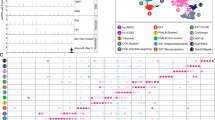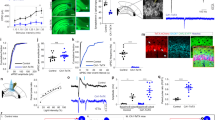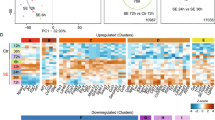Abstract
The hyperpolarization-activated cation current (IH) regulates the electrical activity of many excitable cells, but its precise function varies across cell types. The antiepileptic drug lamotrigine (LTG) was recently shown to enhance IH in hippocampal CA1 pyramidal neurons, showing a potential anticonvulsant mechanism, as IH can dampen dendrito-somatic propagation of excitatory postsynaptic potentials in these cells. However, IH is also expressed in many hippocampal interneurons that provide synaptic inhibition to CA1 pyramidal neurons, and thus, IH modulation may indirectly regulate the inhibitory control of principal cells by direct modulation of interneuron activity. Whether IH in hippocampal interneurons is sensitive to modulation by LTG, and the manner by which this may affect the synaptic inhibition of pyramidal cells has not been investigated. In this study, we examined the effects of LTG on IH and spontaneous firing of area CA1 stratum oriens interneurons, as well as on spontaneous inhibitory postsynaptic currents in CA1 pyramidal neurons in immature rat brain slices. LTG (100 μM) significantly increased IH in the majority of interneurons, and depolarized interneurons from rest, promoting spontaneous firing. LTG also caused an increase in the frequency of spontaneous (but not miniature) IPSCs in pyramidal neurons without significantly altering amplitudes or rise and decay times. These data indicate that IH in CA1 interneurons can be increased by LTG, similarly to IH in pyramidal neurons, that IH enhancement increases interneuron excitability, and that these effects are associated with increased basal synaptic inhibition of CA1 pyramidal neurons.
Similar content being viewed by others
Log in or create a free account to read this content
Gain free access to this article, as well as selected content from this journal and more on nature.com
or
References
Ali AB, Thomson AM (1998). Facilitating pyramid to horizontal oriens-alveus interneurone inputs: dual intracellular recordings in slices of rat hippocampus. J Physiol 507: 185–199.
Bal T, McCormick DA (1996). What stops synchronized thalamocortical oscillations? Neuron 17: 297–308.
Baruscotti M, Bucchi A, Difrancesco D (2005). Physiology and pharmacology of the cardiac pacemaker (‘funny’) current. Pharmacol Ther 107: 59–79.
Bender RA, Brewster A, Santoro B, Ludwig A, Hofmann F, Biel M et al (2001). Differential and age-dependent expression of hyperpolarization-activated, cyclic nucleotide-gated cation channel isoforms 1–4 suggests evolving roles in the developing rat hippocampus. Neuroscience 106: 689–698.
Berger T, Larkum ME, Luscher HR (2001). High I(h) channel density in the distal apical dendrite of layer V pyramidal cells increases bidirectional attenuation of EPSPs. J Neurophysiol 85: 855–868.
Chen K, Aradi I, Thon N, Eghbal-Ahmadi M, Baram TZ, Soltesz I (2001). Persistently modified h-channels after complex febrile seizures convert the seizure-induced enhancement of inhibition to hyperexcitability. Nat Med 7: 331–337.
Chen K, Baram TZ, Soltesz I (1999). Febrile seizures in the developing brain result in persistent modification of neuronal excitability in limbic circuits. Nat Med 5: 888–894.
Chen X, Sirois JE, Lei Q, Talley EM, Lynch III C, Bayliss DA (2005). HCN subunit-specific and cAMP-modulated effects of anesthetics on neuronal pacemaker currents. J Neurosci 25: 5803–5814.
Clapham DE (1998). Not so funny anymore: pacing channels are cloned. Neuron 21: 5–7.
Dube CM, Baram TZ (2006). Complex febrile seizures—an experimental model in immature rodents. In: Pitkanen A, Schwartzkroin PA, Moshe SL (eds). Models of Epilepsy and Seizure. Elsevier Academic Press: Amsterdam. pp 333–340.
Dudek FE, Clark S, Williams PA, Grabenstatter HL (2006). Kainate-induced status epilepticus: a chronic model of acquired epilepsy. In: Pitkanen A, Schwartzkroin PA, Moshe SL (eds). Models of Epilepsy and Seizure. Elsevier Academic Press: Amsterdam. pp 415–432.
Kaupp UB, Seifert R (2001). Molecular diversity of pacemaker ion channels. Annu Rev Physiol 63: 235–257.
Lupica CR, Bell JA, Hoffman AF, Watson PL (2001). Contribution of the hyperpolarization-activated current (I(h)) to membrane potential and GABA release in hippocampal interneurons. J Neurophysiol 86: 261–268.
Luthi A, Bal T, McCormick DA (1998). Periodicity of thalamic spindle waves is abolished by ZD7288, a blocker of Ih. J Neurophysiol 79: 3284–3289.
Luthi A, McCormick DA (1998). H-current: properties of a neuronal and network pacemaker. Neuron 21: 9–12.
Maccaferri G, Lacaille JC (2003). Interneuron Diversity series: Hippocampal interneuron classifications–making things as simple as possible, not simpler. Trends Neurosci 26: 564–571.
Maccaferri G, McBain CJ (1996). The hyperpolarization-activated current (Ih) and its contribution to pacemaker activity in rat CA1 hippocampal stratum oriens-alveus interneurones. J Physiol 497 (Part 1): 119–130.
Maccaferri G, Roberts JD, Szucs P, Cottingham CA, Somogyi P (2000). Cell surface domain specific postsynaptic currents evoked by identified GABAergic neurones in rat hippocampus in vitro. J Physiol 524 (Part 1): 91–116.
Magee JC (1998). Dendritic hyperpolarization-activated currents modify the integrative properties of hippocampal CA1 pyramidal neurons. J Neurosci 18: 7613–7624.
Magee JC (1999). Dendritic Ih normalizes temporal summation in hippocampal CA1 neurons. Nat Neurosci 2: 848.
Monteggia LM, Eisch AJ, Tang MD, Kaczmarek LK, Nestler EJ (2000). Cloning and localization of the hyperpolarization-activated cyclic nucleotide-gated channel family in rat brain. Brain Res Mol Brain Res 81: 129–139.
Notomi T, Shigemoto R (2004). Immunohistochemical localization of Ih channel subunits, HCN1-4, in the rat brain. J Comp Neurol 471: 241–276.
Poolos NP, Migliore M, Johnston D (2002). Pharmacological upregulation of h-channels reduces the excitability of pyramidal neuron dendrites. Nat Neurosci 5: 767–774.
Robinson RB, Siegelbaum SA (2003). Hyperpolarization-activated cation currents: from molecules to physiological function. Annu Rev Physiol 65: 453–480.
Sanchez RM, Jensen FE (2006). Modeling hypoxia-induced seizures and hypoxic encephalopathy in the neonatal period. In: Pitkanen A, Schwartzkroin PA, Moshe SL (eds). Models of Epilepsy and Seizure. Elsevier Academic Press: Amsterdam. pp 323–331.
Shah MM, Anderson AE, Leung V, Lin X, Johnston D (2004). Seizure-induced plasticity of h channels in entorhinal cortical layer III pyramidal neurons. Neuron 44: 495–508.
Sik A, Penttonen M, Ylinen A, Buzsaki G (1995). Hippocampal CA1 interneurons: an in vivo intracellular labeling study. J Neurosci 15: 6651–6665.
Svoboda KR, Lupica CR (1998). Opioid inhibition of hippocampal interneurons via modulation of potassium and hyperpolarization-activated cation (Ih) currents. J Neurosci 18: 7084–7098.
Vasilyev DV, Barish ME (2002). Postnatal development of the hyperpolarization-activated excitatory current Ih in mouse hippocampal pyramidal neurons. J Neurosci 22: 8992–9004.
Zhang K, Peng B, Sanchez RM (2006). Decreased IH in hippocampal area CA1 pyramidal neurons after perinatal seizure-inducing hypoxia. Epilepsia 47: 1023–1028.
Acknowledgements
Images were generated in the Core Optical Imaging Facility, UTHSCSA. We thank Associate Director Victoria C Frohlich, PhD for her advice and assistance. This study was supported by NIH/NINDS R01 NS047385 (RMS); an Epilepsy Foundation of America Postdoctoral Research Training Fellowship, Chenguang Program of Wuhan city (No.200850731370), SRF for ROCS, SEM. (BWP); NSFC (No.30770734), Program for New Century Excellent Talents in University (No. NCET-07-0630) (XHH).
Author information
Authors and Affiliations
Corresponding authors
Additional information
DISCLOSURE
The authors declare no conflict of interest.
Rights and permissions
About this article
Cite this article
Peng, BW., Justice, J., Zhang, K. et al. Increased Basal Synaptic Inhibition of Hippocampal Area CA1 Pyramidal Neurons by an Antiepileptic Drug that Enhances IH. Neuropsychopharmacol 35, 464–472 (2010). https://doi.org/10.1038/npp.2009.150
Received:
Revised:
Accepted:
Published:
Issue date:
DOI: https://doi.org/10.1038/npp.2009.150
Keywords
This article is cited by
-
Dysfunction of hippocampal interneurons in epilepsy
Neuroscience Bulletin (2014)
-
HCN-related channelopathies
Pflügers Archiv - European Journal of Physiology (2010)



